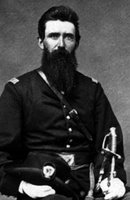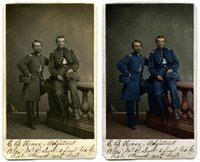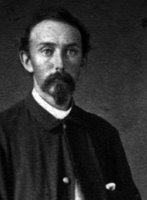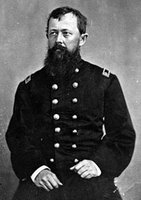Rare Artistic Pose of a Union Artillery Officer
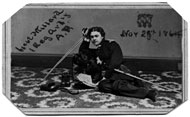
Securing image scans and permissions, and researching and writing about African Americans who participated in the war is my top priority. However, I remain an avid collector of cartes de visite. A recent addition is this image of John Aiken Millard Jr., photographed in the studio of Pine & Bell of Troy, New York.
Millard's artistic pose in certainly unusual for the period. He reclines against a fabric and tassel covered box surrounded by the trappings of an officer: Binoculars and case, sword and scabbard. A leather bound journal lay open, leaning against his forage cap. On the page most visible to the camera appears to be writing. Upon closer examination, the "writing" is nothing more than wiggly lines added in ink by the photographer or an assistant. The presence of the book is perhaps symbolic of an man of letters. Millard's well-tailored uniform, cuff links, and lace handkerchief suggest he hails from a family of privilege and wealth.
The ink inscription in the upper left of the print area identify the sitter as "Lieut Millard 1 Reg Art'y A.P." He officially served as a second lieutenant in Battery H of the First New York Light Artillery, part of the the Army of the Potomac. On the right side of the image is stamped a large letter M, and is written the date, Nov. 29, 1864. Millard officially mustered in to the First a month later. He survived the war and left the army in June 1865.
Cartes de visite like this are rare. I am aware of only one other like it. Check out a larger version on Flickr.
Labels: aiken, army, bell, carte de visite, civil war, john, lieutenant, light artillery, military, millard, new york, officer, pine, potomac, troy, union
